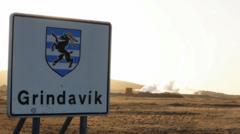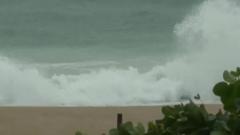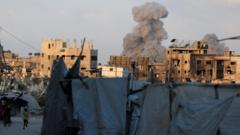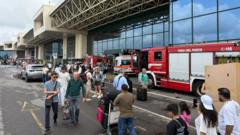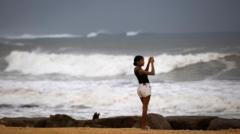The Reykjanes Peninsula in southwest Iceland has recently been rocked by a volcanic eruption that caught the attention of both local residents and the scientific community. The Icelandic Meteorological Office announced that the eruption took place at approximately 09:45 local time, specifically just north of the town of Grindavík. Shortly after the eruption began, a fissure in the ground had expanded to a width of 700 meters (about 2,296 feet) and was still growing at that point.
The eruption's onset followed hundreds of minor earthquakes that had been rattling the Sundhnúks Crater Row area, leading up to an alarming intensity that peaked around 06:30 local time. In anticipation of volcanic activity, authorities had already ordered the evacuation of Grindavík, alongside the nearby Blue Lagoon spa, which is a widely frequented tourist spot. While roads to and from the town have been shut down to ensure safety, air travel has not yet faced any disruptions.
By 11:00 local time, the fissure had not only extended southward, but a new crack in the Earth had also formed, necessitating further evacuation measures. Officials from local authorities were particularly concerned about the remaining residents who, despite warnings, chose to stay put. Reports indicate that as of the eruption's onset, only about 40 dwellings were occupied, marking a significant decrease from the town’s usual population of roughly 4,000, many of whom had been previously evacuated since November 2023 due to similar volcanic threats.
The length of the magma tunnel formed beneath the current eruptive site is approximately 11 kilometers (6.8 miles), which is notably the longest recorded since the last significant eruptive phase that started in the previous year. According to the IMO, the prevailing wind is set to direct any hazardous gas emissions from the eruption in a northeast direction towards the capital area, raising additional safety concerns for nearby communities.
The Reykjanes Peninsula has witnessed a series of geological activity starting in 2021, a stark contrast to the 800-year dormant period of volcanic activity prior to this recent wave. Iceland, sitting perilously over the Mid-Atlantic Ridge, is home to 33 active volcanic systems, making it one of the most tectonically active countries in Europe. Whether this eruption is a precursor to more activity or a standalone event remains to be seen as experts monitor the situation closely.
The eruption's onset followed hundreds of minor earthquakes that had been rattling the Sundhnúks Crater Row area, leading up to an alarming intensity that peaked around 06:30 local time. In anticipation of volcanic activity, authorities had already ordered the evacuation of Grindavík, alongside the nearby Blue Lagoon spa, which is a widely frequented tourist spot. While roads to and from the town have been shut down to ensure safety, air travel has not yet faced any disruptions.
By 11:00 local time, the fissure had not only extended southward, but a new crack in the Earth had also formed, necessitating further evacuation measures. Officials from local authorities were particularly concerned about the remaining residents who, despite warnings, chose to stay put. Reports indicate that as of the eruption's onset, only about 40 dwellings were occupied, marking a significant decrease from the town’s usual population of roughly 4,000, many of whom had been previously evacuated since November 2023 due to similar volcanic threats.
The length of the magma tunnel formed beneath the current eruptive site is approximately 11 kilometers (6.8 miles), which is notably the longest recorded since the last significant eruptive phase that started in the previous year. According to the IMO, the prevailing wind is set to direct any hazardous gas emissions from the eruption in a northeast direction towards the capital area, raising additional safety concerns for nearby communities.
The Reykjanes Peninsula has witnessed a series of geological activity starting in 2021, a stark contrast to the 800-year dormant period of volcanic activity prior to this recent wave. Iceland, sitting perilously over the Mid-Atlantic Ridge, is home to 33 active volcanic systems, making it one of the most tectonically active countries in Europe. Whether this eruption is a precursor to more activity or a standalone event remains to be seen as experts monitor the situation closely.

